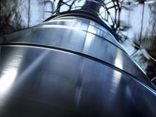Explore corrosion tables at Steel Finder
Corrosion table data
The tables are mainly based on results of laboratory tests, carried out with pure chemicals and water solutions nearly saturated with air. It must be pointed out that the corrosion rate can be quite different if the solution is free from oxygenAll concentrations are given in weight-% and the solvent is water if nothing else is shown. The corrosion data apply to annealed materials with normal microstructure and clean surfaces. Laboratory tests are not strictly comparable with actual service conditions, where the corroding medium often contains impurities. These may in some cases increase corrosion, in others decrease it. In unfavorable cases, the increase can be very great. Before making the final selection of material, it is therefore in many cases necessary to make tests.
The most relevant results of laboratory tests are obtained if the solution used is identical with that which occurs in practice. This includes any effect impurities may have on corrosion. It is even better to expose test pieces to the actual process or environment concerned. Weighing and microscopical examination of the test specimens after a certain period of exposure will give a good idea of the corrosion risks to be expected.
Advice on materials selection
When there is some doubt about the materials selection, it is always advisable to contact the technical service of the supplier of the material. It is very important to furnish full information about the corrosion conditions concerned.The following information is necessary:
- Corrosion environment (including chemical formula if possible)
- Concentrations (if possible also pH)
- Content of impurities, e.g. Cl-, oxidising agents etc.
- Temperature
Information concerning the type of structure, preferably with sketches, drawings or process descriptions, previously used materials, flow velocities, temperature variations, service life requirements etc., is also very valuable.

